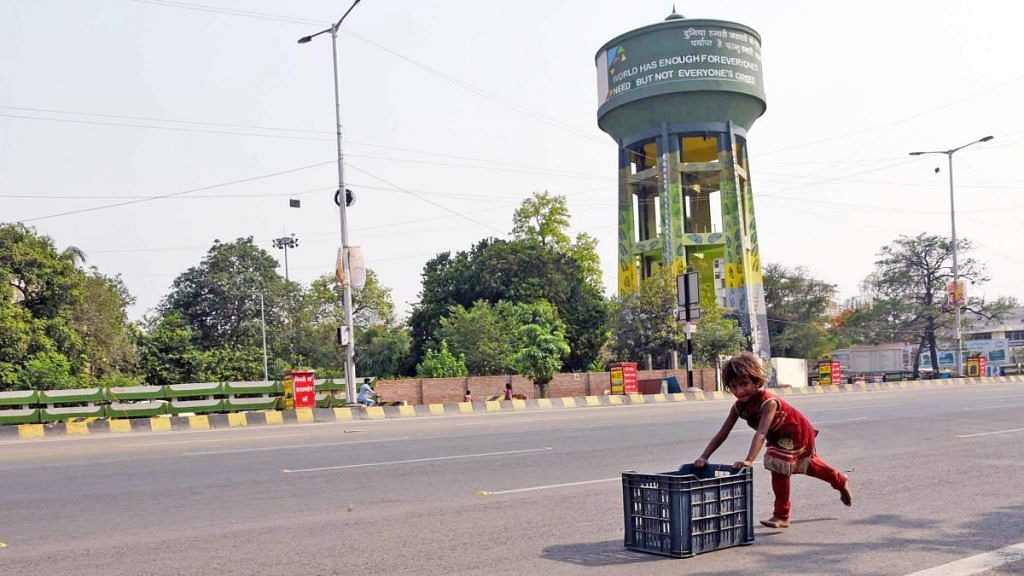Mainstream papers revisit PM Modi’s video conference with chief ministers and conclude that a graded lifting of lockdown curbs and the need for restarting the economy are on the cards — but lockdown 3.0, in some form will follow.
The pink papers dwell on how the Franklin Templeton debacle led RBI to open up a Rs 50,000 crore special liquidity service for mutual funds.
In ‘RBI opens a ₹50,000…’ TOI reports that the central bank “provided a special facility corpus of Rs 50,000 for mutual funds”. The move comes after Franklin Templeton Mutual Funds shut down six of its highest yielding debt funds.
It looks like we are emulating the US in more ways than one: In ‘Doing a Trump: States build walls….’ TOI reports, “Officials in Tamil Nadu’s border district of Vellore surprised everyone recently by building two concrete walls overnight on roads near the Andhra border.’’ This hindered traffic to Vellore, “famous for its super-speciality medical services…”, and blocked the movement of at least 10,000 litres of milk to Andhra Pradesh.
TOI also notes a new dubious record — ‘58 die of Covid infection, highest in a day..’ Cases neared the 30,000-mark after a spurt in cases from Indore.
And in an exclusive interview, Chief Justice of India S.A. Bobde speaks about his “vision for the Court” once the coronavirus blows over. With digitisation in the form of video-conferencing or e-filing, he said, justice can be carried out “without robes or congregation”.
A mood anchor piece, ‘In war room, 5 teams of doctors, data analysts keep watch’, the daily describes how the Ministry of Health and Family Welfare’s leading research team are hard at work. The team of “30 odd people — including doctors, data analysts, information communication technology specialists and public health professionals from various agencies” are meant to look at data and help states in their preparedness against Covid-19.
HT’s focus on economic concerns is reflected in another story — ‘Incentives, tariff protection in plan to push Make in India’. Post 3 May, it writes that government officials say that the central government will offer domestic and foreign manufacturers “policy and fiscal incentives to manufacture locally” while increasing import duty.
The other big story is on faulty test kits: ‘ICMR tells states not to deploy rapid kits of China firms’. This comes after one of the companies that supplied the kits revised prices sharply down following the Delhi High Court’s observation on Sunday that there appeared to be significant profiteering going on.”
Meanwhile, Delhi government is on a buying spree: ‘Delhi plans to buy 500 ventilators, to set up ICUs in OTs’ to increase the capacity to treat critical Covid-19 patients.
Is there something fishy in the test kits issue? In the report, ‘ICMR says no payment made for Chinese test kits supplies’. Hindu reports, “India does not stand to lose a single rupee, said the Indian Council of Medical Research (ICMR) on Monday in response to a clarification sought on the alleged profiteering by distributors, exposed through a legal dispute between an importer and a distributor, in the delivery of rapid antibody testing kits to it.”
On ‘Confirmed: Chinese kit blunder’, the Kolkata daily notes, tht ICMR conceded on Monday that the rapid antibody test kits it had procured from two Chinese companies to detect novel coronavirus infections had failed in field tests.’’ Telegraph says this “admission brings into question the test validation process of the apex medical research body… and the general perception that the least expensive product discovered through auctions is always the ideal option”.
In some concerning news, India’s ability to “completely flatten” the curve of Covid-19 cases will hinge on containment efforts in 27 hotspot districts across the country. “Contacting tracing, testing, isolation and treatment” are the ways in which the hotspots will be tackled, said NITI Aayog CEO, Amitabh Kant.
A heartening anchor story, notes how Mumbai Mayor Kishori Pednekar dressed up in a nurse’s uniform for a “pep talk” with nursing students “who were apprehensive about contracting the virus”. Pednekar worked as a nurse for 10 years, adds the report. In the picture, you can see her smiling through her mask.
Well, some sectors are optimistic about the future: in “Cash-strapped Indian airlines have reopened bookings for domestic flights from as early as 16 May”, the pink paper notes airlines are planning bookings from mid May: “Since the government, unlike some of its global peers, has still not shown its inclination to bail out the aviation industry, airlines are taking their own measures to generate revenue”.
And in a sign of distressing times, “Start ups hiring for a steal…’’. The story notes how startups are scouting talent and taking advantage of “retrenchment and hiring freezes” amid the coronavirus lockdown.
Everyone seems to be suffering losses — even those at the frontline like food delivery apps. In a brief report, the paper takes note of Zomato’s decision to withdraw discounts offered by its restaurant partners in order to “cut losses in a competitive food-delivery market”.
